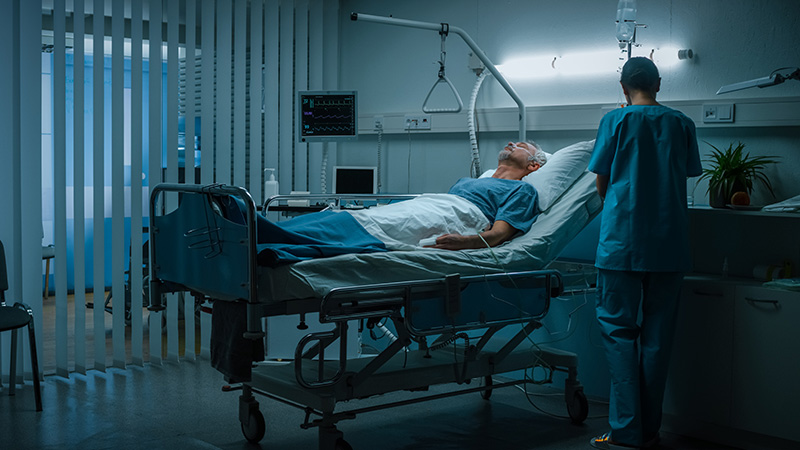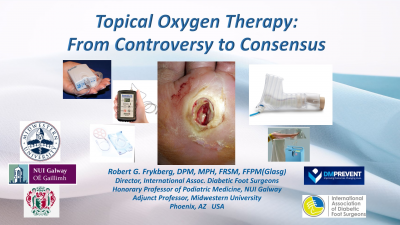
Practice Perfect 839
Rest in the Hospital:
Can’t I Just Get Some Sleep?
Rest in the Hospital:
Can’t I Just Get Some Sleep?

Most of my trainees – residents and students alike – know that I get very little sleep. They are used to waking up and reading emails from me posted sometime in the middle of the night. It’s true; I sleep terribly and wake up at all hours. I’ve never been much of a sleeper – even as a kid. For me, this is a matter of habit and a brain that doesn’t quiet down when it needs to (and maybe some contribution to a little girl that likes to crawl into my bed, waking me up).
For patients in the hospital, though, sleeplessness is an unfortunately all too common situation. It’s even become a well-known “joke” that hospitals are not places to go to get rest. Some joke, huh? Of anyone, these patients need sleep to recover from their injuries, surgeries, infections, and other acute pathologies. I’d argue that no one needs more sleep than hospitalized patients. Despite that extreme need for rest and relaxation, hospitalized patients are poked, prodded, and awakened at all hours of the day and night. Because of blood draws, every four-hour vitals checks, radiology tests, beeping alarms, other patients snoring, or doctors and nurses coming at all hours, patients almost never receive a restful night’s sleep.
An Australian observational study1 from 2018 in a tertiary-care hospital found 75.8% of patients reporting either poor/very poor or fair sleep during their hospitalization. They also found clinical care interventions and environmental noise to be the primary factors associated with poor sleep.
Does it have to be this way? Outside the intensive care units, is it really necessary for patients to be awakened at night? Is it possible that certain otherwise stable patients would be better off left alone to sleep?
Ideas to Improve Sleep in the Hospital
Care Interventions
Clustering care by specific times may be helpful. For example, avoiding unnecessary vital signs checks and giving nighttime medications in stable patients would allow for longer uninterrupted sleep.
Hospitals should first create an evaluation document each patient would receive upon admission, classifying patients into a low, intermediate, or high acuity category in much the way patients are evaluated for ICU or telemetry. Patients in the low-risk category would not be awakened between designated hours, vitals would be deferred, interventions would be scheduled during awake hours, and physicians would not see nonurgent consultations during this protected time. Intermediate-risk patients would have specific situations in which interventions are considered, while high-risk patients would remain at the high access levels.
Next, medication closets can be installed at patient beds. Within these closets would be all of the scheduled medications for the day. These medications would be pre-verified with the patient to prevent inappropriate administration. The nurses could then administer IV medications without having to awaken a patient.
When intravenous lines are established, other precautions such as anti-kinking instruments which currently exist would be used to prevent this problem and the associated noise of the alarm. Similarly, adult arm boards, like what is used for pediatric patients could also be maintained to keep the arm straight. It is currently possible to evaluate patients for dehydration and, in well-perfused patients, turn the drip off (saline locking the IV) so the alarm doesn’t ring when the bag runs out of fluid (and the patient has to urinate multiple times due to fluid overload).
Other ideas include establishing a sleep preservation mode in the electronic medical record and holding 5AM blood draws until 7AM2. Changing staff scheduling to add more phlebotomists and lab technicians during these peak draw times allows more efficient use of a smaller time window for processing while allowing patients to rest.
Noise Reduction
It’s well documented that hospital noise is an independent risk factor for patient insomnia3. Many hospitals maintain quiet hours, asking visitors to keep quiet when on the wards during certain time periods, but the primary disruptors are equipment noise. I can’t count how many times I’ve walked into a patient’s room to hear the IV alarm squawking away, whether due to an empty bag or occlusion of the line.
Hospital wards should be redesigned to leave a larger distance between the rooms and the nursing station, typically a loud location. I always feel sorry for the patient housed right next to the nurses’ desk with all its commotion. Similarly, hall lights can be modified so that the typical fluorescent lights during the day can be turned off and spotlights used instead to keep ambient light to a minimum. At the very least, lights should be dimmed in hallways.
Simple interventions do have a positive effect. Norton, et al found a 22% improvement in patient sleep (47% to 69% of patients reporting sleep quality as good or excellent) after educating staff about noise, installing window blinds, and turning down alarms4.
Many other interventions are possible, including those that focus on patient coping mechanisms such as playing relaxing music and breathing exercises, but putting the onus on the patient to sleep in an environment not conducive to sleep is the wrong direction to go. Obviously, there will be limitations to the effectiveness of any intervention (pain originating from disease or surgery may limit anyone’s ability to sleep), but it’s clear that hospitals can do a much better job supporting patients in their highly necessary restorative sleep.
Best wishes.

Jarrod Shapiro, DPM
PRESENT Practice Perfect Editor
[email protected]

-
Delaney LJ, Currie MJ, Huang HC, Lopez V, Van Haren F. “They can rest at home”: an observational study of patients’ quality of sleep in an Australian hospital. BMC Health Serv Res. 2018;18(1):1-9.
Follow this link -
Affini MI, Arora VM, Gulati J, Mason N, Klein A, Cho HJ, Clarke K, Lee V, McDaniel LM, Orlov NM. Defining existing practices to support the sleep of hospitalized patients: A mixed‐methods study of top‐ranked hospitals. J Hosp Med. 2022 Aug;17(8):633-638.
Follow this link -
DuBose JR, Hadi K. Improving inpatient environments to support patient sleep. Int J Qual Health Care. 2016 Oct;28(5):540-553.
Follow this link -
Norton C, Flood D, Brittin A, Miles J. Improving sleep for patients in acute hospitals. Nursing Standard (2014+). 2015 Mar 11;29(28):35.
Follow this link
































Comments
There are 0 comments for this article